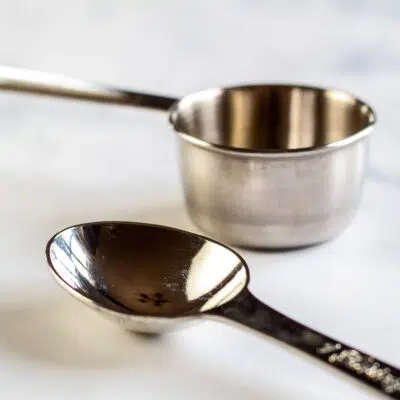Unveiling the Mysteries of Measurement: A Comprehensive Guide to Converting Between Cups and Tablespoons
The kitchen is a battlefield for culinary creations, and the right tools are essential for achieving victory. One crucial aspect of kitchen warfare involves wielding measuring cups and spoons with confidence. This informative guide delves into the world of volume measurement, specifically focusing on the conversion between cups and tablespoons, equipping you to conquer any recipe with accuracy.
A Standardized System: Understanding Cups and Tablespoons
In the culinary realm, two primary units reign supreme for measuring liquid and dry ingredients: cups and tablespoons. Here’s a breakdown of these standard units:
-
Cup: A cup is a unit of volume typically equal to 8 fluid ounces in the United States. It’s a convenient unit for measuring larger quantities of liquids or dry ingredients in recipes.
-
Tablespoon (Tbsp): A tablespoon is a unit of volume smaller than a cup, typically equal to 3 fluid ounces in the United States. Tablespoons are used for measuring smaller amounts of liquids or dry ingredients, often for precise measurements in baking or adding spices.
Understanding this basic relationship between cups and tablespoons is the foundation for successful recipe conversion and accurate measurement.
The Conversion Equation: Transforming Cups into Tablespoons
Knowing how many tablespoons are in a cup is vital for scaling recipes, substituting ingredients, or using alternative measuring tools. Here’s the key conversion formula:
- 1 cup = 16 tablespoons (US customary system)
This formula applies to both liquid and dry ingredients in most standard recipes. Therefore, to convert cup measurements to tablespoons, you simply multiply the number of cups by 16.
For example, if a recipe calls for 1/2 cup of milk, and you only have a tablespoon measuring spoon, you can convert the measurement as follows:
- 1/2 cup x 16 tablespoons/cup = 8 tablespoons
Therefore, you would need 8 tablespoons of milk to substitute for the 1/2 cup measurement in the recipe.
Beyond the Basics: A World of Measurement Equivalents
While the 1 cup = 16 tablespoons conversion is a cornerstone, the world of culinary measurement encompasses a broader range of equivalents:
-
Teaspoons (tsp): There are 3 teaspoons (tsp) in 1 tablespoon (Tbsp).
-
Fluid Ounces (fl oz): In the US customary system, 1 cup is equal to 8 fluid ounces (fl oz). However, it’s important to note that fluid ounces are specifically for measuring liquids, not dry ingredients.
-
Milliliters (mL) and Liters (L): The metric system uses liters (L) and milliliters (mL) for volume measurement. Conversion factors can be found to convert between metric and US customary units if a recipe is written in the metric system.
Understanding these equivalencies empowers you to navigate recipes that use different measurement systems or substitute ingredients with confidence.
A Dash of Caution: When Volume Isn’t the Same as Weight
It’s important to remember that cup and tablespoon measurements are based on volume, not weight. This distinction is crucial when dealing with dry ingredients like flour, sugar, or grains. The weight of a cup of flour can vary depending on how densely it’s packed.
For accurate measurements of dry ingredients, using a kitchen scale is recommended whenever possible. However, if a scale is unavailable, the following tips can help with using cups and tablespoons for dry ingredients:
-
Spoon and level method: Spoon the dry ingredient into your measuring cup and gently level it off with a knife to avoid overpacking.
-
Lightly pack brown sugar: Brown sugar has a tendency to clump. For accurate measurement, pack the brown sugar lightly into the cup.
By understanding the volume-weight distinction, you can ensure your ingredients are measured accurately for successful baking or cooking.
Frequently Asked Questions (FAQ) About Cups and Tablespoons
1. Are there different cup sizes?
Yes, technically. While the 8-ounce cup is standard in the US, a metric cup is equal to approximately 250 milliliters. However, most recipes in the US will assume an 8-ounce cup.
2. Can I use a tablespoon to measure dry ingredients?
Yes, but it’s less accurate than using a kitchen scale. The spoon and level method can help minimize errors.
3. How many fluid ounces are in a tablespoon?
There are 2 tablespoons in 1 fluid ounce (US customary system).
4. What if a recipe calls for a fraction of a tablespoon?
If you don’t have a measuring spoon with fractional markings, you can estimate.
5. Is it okay to substitute cups for tablespoons in a recipe?
While it might seem like a simple conversion (1 cup = 16 tablespoons), substituting cups for tablespoons can significantly alter the outcome of a recipe. Cups are meant for measuring larger volumes, and using them instead of tablespoons for dry ingredients can result in a denser final product (e.g., cookies that are too cakey).
6. How can I ensure accurate measurements without a kitchen scale?
If you don’t have a kitchen scale, here are some tips for using cups and tablespoons accurately:
-
Invest in a good quality measuring cup set: A set with clear markings and a pouring spout can improve accuracy and ease of use.
-
Use the right tool for the ingredient: Liquid measuring cups have a spout for pouring, while dry measuring cups have a flat rim for leveling off ingredients.
-
Don’t scoop directly from the bag: This can lead to overpacking, especially with dry ingredients like flour. Spoon the ingredient into the measuring cup and then level it off.
By following these conversion tips, understanding the volume-weight distinction, and employing accurate measuring techniques, you can conquer any recipe that throws cups and tablespoons your way. Remember, a little kitchen science and a dash of caution go a long way in baking and cooking success!



